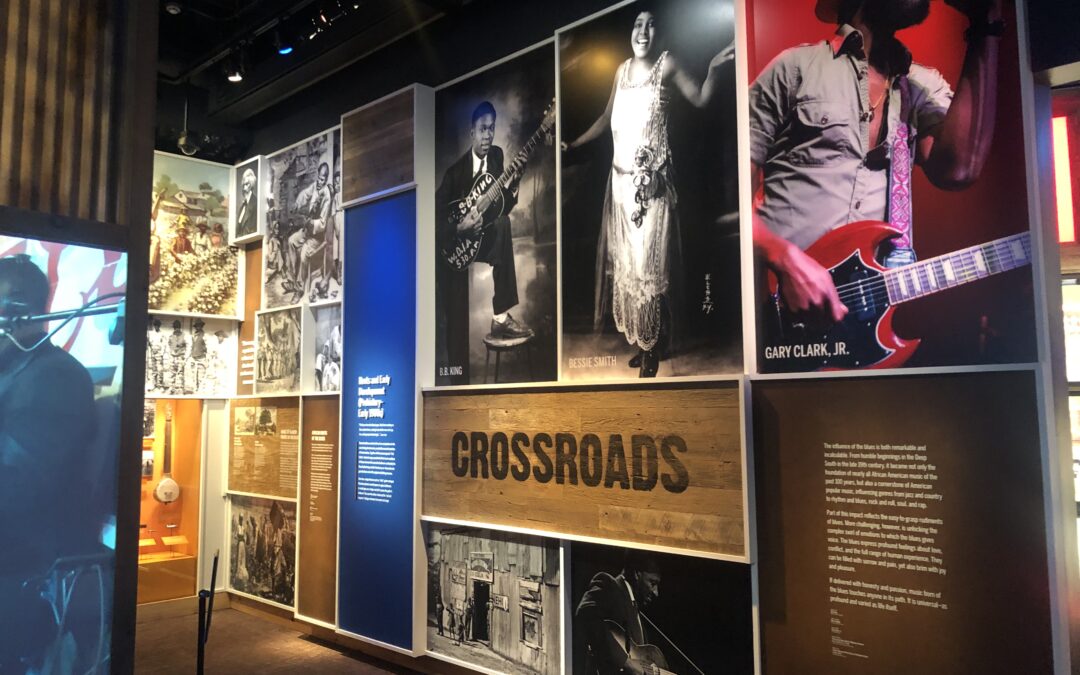Planted in Nashville’s honky-tonk district on Lower Broadway, the National Museum of African American Music offers tourists and Nashvillians the chance to easily visit the nation’s musical diversity.
Located on Broadway, the museum is in the heart of Music City, right across from the Bridgestone Arena and just a couple of blocks from the Country Music Hall of Fame and Museum and the Convention Center, where easy parking is available.
The new museum is part of the “Fifth + Broadway” development, a business park that features a 31-story luxury high rise, restaurant options, clothing stores and event space.
Of course, the main element is the long-awaited exploration of African American Music.
When visitors enter the museum to begin their tour, they will first be guided into the Roots Theater. In the theater, an introductory film is shown guiding the visitors through the story of African American history and the musical traditions that were developed over time. Genres such as spirituals, blues, jazz, gospel, R&B and hip-hop are included. The film also emphasizes the different historical periods in America and how they shaped the music made by African Americans.
After the presentation in the Roots Theater, visitors can enter into the Rivers of Rhythm Pathways. This central corridor features touch-panel interactives with headphones to listen to music through African American history. Along the walls, there are animated timelines projected and historic moments in African American music displayed as well. From the pathways, visitors can access any one of the five major genre galleries. Museum officials suggest visitors start with the “Wade in The Water” gospel gallery and end with “The Message” hip hop gallery.
The five genre galleries include:
- Wade in The Water — An experience that portrays gospel music as a spiritual medium for black expression in spite of the adversity of slavery and post-Civil War hardships. Wade in The Water takes visitors through the eras of gospel music and leaves them with the current landscape of gospel music.
- Crossroads — This gallery immerses visitors in the genre of blues. The journey starts with its Deep South and Mississippi Delta roots and ends in the period following the Great Migration, when Southern Blacks moved to Northern industrial cities with hopes to better their lives. The hardships that birthed the blues followed many African Americans from the South to the big cities of the Midwest and North.
- A Love Supreme — Jazz is the focus of this gallery. Originating in the early 1900s, jazz is expressed in this gallery as the arrival of true improv, and spontaneity in African American music. The numerous subgenres of jazz like bebop, swing, fusion, and others are displayed as their own worlds with stars emerging from them all.
- One Nation Under a Groove — Picking up after World War II, this gallery takes visitors into the world of rhythm and blues. A fusion of gospel, blues and jazz, R&B became the new popular platform for African Americans to inspire, entertain and express their life experiences. From the Motown era to the present-day landscape, this gallery takes you through the dynamic development of R&B.
- The Message — Lastly, the journey ends with a gallery about hip-hop. Visitors will see how this genre has connections with R&B and jazz, and how it started in the early 1970s in New York. This art form has taken on many subgenres over the years, and this gallery reflects all the major facets of hip-hop history. Considering hip-hop is a widely consumed genre today, this gallery draws many present-day connections at its conclusion.
To supplement each genre gallery, there are a variety of interactive sections scattered throughout the museum. Gospel offers the “Choir Experience,” blues has a “Make a Blues Song” section, jazz has a “Make a Jazz Song” section, R&B has a “Dance Experience” and hip-hop has an “MC Booth.” These options and others allow visitors to further immerse themselves in the genre galleries.
“The interactive elements and personalized take-home souvenirs allow our guests to tailor their experiences to their preferences within the framework of what we hope is an excellently curated space,” said Museum Communications Manager Marlyncia Price said.
Whether visitors are only in Nashville for a small period of time or are residents of the area, Price said she believes the museum is so dynamic that its worth transcends a one-time visit.
“The thing about the museum is that no matter how many times you come back, you can have a different experience every time…,” she said.
“So few places exist purely to celebrate Black musical excellence, which gives us an enormous opportunity to contribute to the narrative of American music history.”
The National Museum of African American Music currently is open Thursdays through Sundays with tours starting at 11 am and the last one beginning at 5:30 pm. COVID-19 precautions such as masks and social distancing are enforced upon entering the museum as well to make for a safe experience for all visitors.

